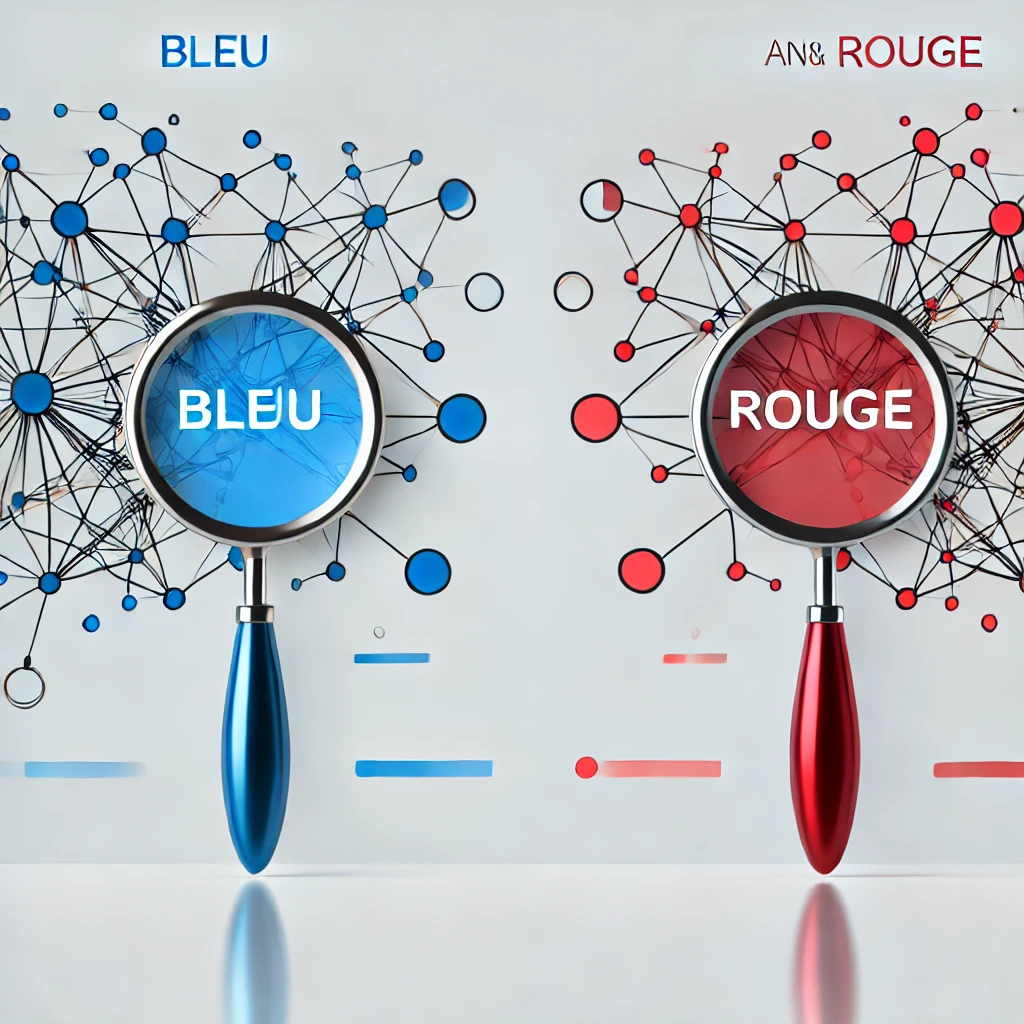As NLP (Natural Language Processing) models become a part of our daily lives, objectively evaluating their performance is more important than ever. BLEU and ROUGE are two of the most commonly used metrics for evaluating how accurately a model generates, translates, or summarizes text. In this post, we’ll explore what BLEU and ROUGE are, how they work, and take a look at new trends in evaluation metrics.
BLEU: Measuring n-gram Precision
BLEU (Bilingual Evaluation Understudy) evaluates how closely a model-generated text matches a reference text, based on n-gram matching. Commonly used for machine translation, BLEU measures how well words or sequences of words (n-grams) in the generated text align with the reference text.
- n-gram Precision: BLEU checks more than just individual word matches, looking at sequences of two or more words (n-grams). For example, 1-gram measures single word accuracy, while 2-gram captures two-word sequences.
- Brevity Penalty: To avoid rewarding overly short responses, BLEU includes a penalty for sentences that are too brief. This ensures that short texts don’t artificially inflate their scores by matching only the most common words.
BLEU scores range from 0 to 1, with scores closer to 1 indicating a high similarity with the reference text. It is especially reliable when multiple reference texts are used.
ROUGE: Optimized for Summarization
ROUGE (Recall-Oriented Understudy for Gisting Evaluation) was developed to measure summarization accuracy, focusing on how well the generated text captures essential content from the reference text.
The metric offers several variations:
- ROUGE-N: Measures n-gram overlap between generated and reference texts. ROUGE-1 (single-word matches) and ROUGE-2 (two-word matches) are commonly used.
- ROUGE-L: Focuses on the longest common subsequence (LCS) between the generated and reference texts, which preserves the sentence structure and improves coherence.
- ROUGE-W: A weighted version of ROUGE-L, emphasizing longer matching sequences to give more accurate results in summarization.
ROUGE is particularly effective for evaluating summaries, as it checks whether the generated text captures key information.
Key Differences Between BLEU and ROUGE

Image generated by Dall-E
These metrics differ in their primary focus:
- BLEU emphasizes precision, measuring how well the generated text’s structure matches the reference text, making it ideal for translation.
- ROUGE emphasizes recall, measuring how much of the reference content is included in the generated text, making it better suited for summarization.
New Trends in Evaluation Metrics: METEOR and BERTScore
While BLEU and ROUGE remain widely used, more nuanced evaluation metrics are emerging as NLP models become increasingly complex. Two notable examples are METEOR and BERTScore.
-
METEOR: This metric was designed to be more flexible than BLEU, considering stem matching, synonyms, and morphology. Unlike BLEU, which penalizes variations in word form, METEOR can capture more subtle semantic similarities, offering a more adaptable evaluation.
-
BERTScore: Leveraging pre-trained language models like BERT, BERTScore evaluates text by comparing its semantic similarity to the reference. Rather than relying on exact word matches, it assesses contextual similarity, providing scores that are often closer to human judgment. BERTScore is particularly useful for assessing text nuances and meaning.
These newer metrics help fill the gaps left by BLEU and ROUGE, especially when evaluating modern language models. BERTScore’s focus on meaning makes it ideal for tasks that prioritize semantic accuracy, while METEOR’s flexibility is advantageous for tasks requiring nuanced comparisons.
Conclusion
BLEU and ROUGE are still powerful tools in NLP evaluation, but as models grow more sophisticated, new metrics like METEOR and BERTScore are helping overcome their limitations. With an understanding of these various metrics, you can choose the right one for your specific NLP tasks and interpret your evaluation results more effectively.
Now, equipped with insights into BLEU, ROUGE, and emerging metrics, you can take your NLP model evaluations to the next level!



